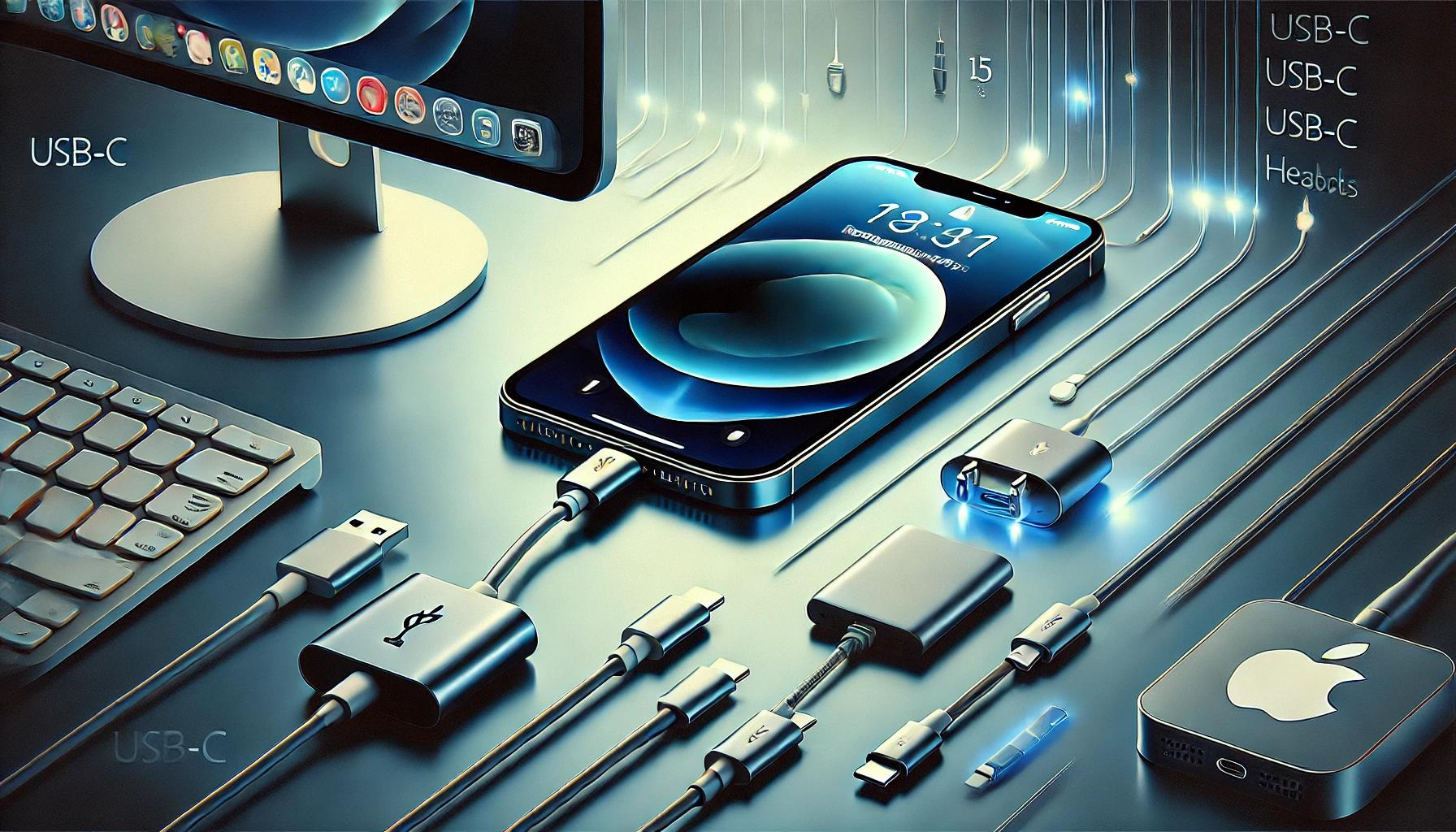With the release of the iPhone 15 and iPhone 15 Plus, Apple has finally transitioned from the Lightning port to USB-C, opening up a wide range of connectivity options for users. This change, long anticipated by many, allows for easier connections to displays, external storage, cameras, and more, all using the same cable as your other devices. The iPhone 15 Pro and Pro Max take this even further by supporting USB-3 speeds, enabling data transfer rates of up to 10 Gbps.

Why Did Apple Switch to USB-C?
Apple’s move from Lightning to USB-C wasn’t just about following trends. USB-C offers more versatility, carrying both power and data with a single connector. While Apple had fully integrated USB-C into its Mac and iPad lines since 2015, it held onto Lightning for the iPhone due to the ecosystem and user backlash from previous port changes. However, the push from the EU, which mandated USB-C as a universal connector to reduce e-waste, forced Apple’s hand. The result? A universal charging and connectivity solution that benefits all users, despite the inconvenience of replacing old Lightning cables.
Universal USB-C Charging
The transition to USB-C means you can now use the same cable to charge most of your Apple devices, from your iPhone 15 to the latest Macs and iPads. Even the latest Apple TV remote and AirPods Pro come with USB-C charging ports. The benefit is clear: one cable for all your devices, simplifying your tech life. Plus, with USB-C being a non-proprietary standard, you have the freedom to choose from a variety of cables and chargers on the market.
Charge Other Devices with Your iPhone 15
One of the coolest new features of the iPhone 15’s USB-C port is its ability to charge other devices. Your iPhone can now act as a power bank for accessories like AirPods or even another iPhone. While it’s not the fastest charging option, this feature is a lifesaver in a pinch, giving you more flexibility on the go.
Connect to External Displays with Ease
Gone are the days of clunky Lightning dongles. With USB-C, you can directly connect your iPhone 15 to an external display using a simple USB-C to HDMI cable. This makes it easier than ever to mirror your iPhone screen on a 4K TV or monitor, perfect for presentations, gaming, or watching movies. The Pro models, equipped with the powerful A17 Pro chip, turn your iPhone into a portable gaming console when paired with a controller and connected to a TV.
Expand Your Storage with USB-C Drives and SD Cards
The iPhone 15’s USB-C port also makes it easier to expand your local storage. You can connect a USB-C hard drive or SD card reader and manage your files directly through the Files app. For photographers and videographers, this means you can import photos directly from your camera’s SD card, or even record high-quality ProRes 4K video directly to an external SSD.
Plug in Hardware Keyboards, Wired Internet, and More
USB-C on the iPhone 15 supports a wide array of peripherals without needing extra drivers. Whether it’s a hardware keyboard, a USB-C microphone for podcasting, or a USB-C to Ethernet adapter, the possibilities are vast. Musicians can even connect MIDI keyboards to compose music on the go with apps like GarageBand.
Enjoy Wired Headphones Again
While Bluetooth headphones like AirPods are the norm, there’s still a place for wired headphones. With USB-C, you can now use any USB-C headphones with your iPhone, iPad, or Mac. Apple’s new USB-C EarPods, for example, work seamlessly across all your devices, offering a wired option that’s convenient and versatile.